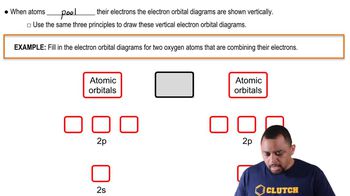Here are the essential concepts you must grasp in order to answer the question correctly.
Hybrid Orbitals
Hybrid orbitals are formed when atomic orbitals on the same atom combine to create new orbitals that are degenerate in energy and have different shapes. This process allows for the formation of bonds that are more effective in terms of geometry and energy, such as in sp, sp2, or sp3 hybridization. Hybridization is crucial for understanding molecular geometry and bonding in covalent compounds.
Recommended video:
Molecular Orbitals
Molecular orbitals are formed when atomic orbitals from different atoms combine to create new orbitals that belong to the entire molecule rather than to individual atoms. This concept is central to molecular orbital theory, which explains the bonding and electronic structure of molecules. Molecular orbitals can be bonding, antibonding, or non-bonding, influencing the stability and reactivity of the molecule.
Recommended video:
Atomic Orbitals
Atomic orbitals are regions in an atom where there is a high probability of finding electrons. They are defined by quantum numbers and include s, p, d, and f types, each with distinct shapes and energy levels. Understanding atomic orbitals is essential for grasping how they can combine to form hybrid or molecular orbitals, which are fundamental to chemical bonding.
Recommended video:

 Verified step by step guidance
Verified step by step guidance


